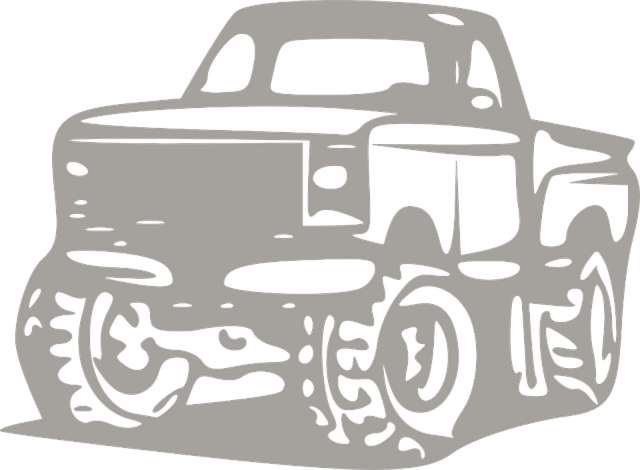In Brownsville, Texas, where off-road conditions pose safety challenges, fleet managers must prioritize rock rail maintenance using advanced fleet truck diagnosis tools. These tools are crucial for identifying issues early, ensuring proper rock rail placement, and addressing weather impacts. Proactive management, including regular inspections and strategic maintenance planning, optimizes protection for vehicles and road users in diverse terrain, enhancing safety and efficiency for commercial operations in the dynamic local economy.
“Rock rails, essential safety features on commercial vehicles, play a pivotal role in mitigating damage during off-road or emergency situations. This article offers a comprehensive guide to understanding these robust barriers. We explore their significance through the lens of fleet truck diagnosis tools in Brownsville, highlighting their role in predictive maintenance. Further, we delve into common issues, challenges, and best practices for maintaining rock rails, ensuring commercial vehicles are prepared for any road condition.”
- Understanding Rock Rails: A Basic Overview
- The Role of Fleet Truck Diagnosis Tools in Brownsville
- Common Issues and Challenges with Rock Rails
- Best Practices for Maintaining Rock Rails in Commercial Vehicles
Understanding Rock Rails: A Basic Overview

Rock rails, also known as side guard rails or crash barriers, are an essential safety feature designed to protect vehicles and their occupants in case of a collision, especially during off-road driving or on rough terrain. These sturdy metal bars are strategically placed along the sides of roads, trails, or construction sites, acting as a barrier between the vehicle and potential hazards like rocks, trees, or other obstacles. By providing an extra layer of protection, rock rails can significantly reduce the risk of serious damage to vehicles and minimize the chances of injuries during accidents.
For fleet managers and truck owners in Brownsville, maintaining and inspecting these critical safety components is a vital part of regular vehicle upkeep. Using advanced fleet truck diagnosis tools can help identify any issues or wear and tear in the rock rails, ensuring they remain effective when it matters most. Regular checks and prompt repairs are crucial to guarantee the safety of drivers and passengers, especially in areas known for their challenging road conditions.
The Role of Fleet Truck Diagnosis Tools in Brownsville

In the dynamic landscape of transportation, especially in bustling cities like Brownsville, Texas, maintaining a robust fleet of trucks is paramount for businesses and logistics operations. The role of fleet truck diagnosis tools cannot be overstated; these technologies play a pivotal part in ensuring optimal performance, safety, and cost-effectiveness. By employing advanced diagnostic solutions, fleet managers in Brownsville can navigate the challenges unique to their urban environment, where tight corners, heavy traffic, and diverse terrains demand precise vehicle control and rapid troubleshooting.
These diagnosis tools equip truck operators with real-time data insights, enabling them to quickly identify and address mechanical issues before they escalate. This proactive approach translates into reduced downtime, decreased maintenance costs, and enhanced road safety. With the ability to monitor engine performance, tire pressure, brake systems, and other critical parameters, fleet managers can make informed decisions, optimize routes, and streamline operations, ultimately contributing to the efficient flow of goods and services in Brownsville’s vibrant economy.
Common Issues and Challenges with Rock Rails

Rock rails, often installed along roadsides to prevent vehicles from veering off the road or colliding with obstacles, serve a critical safety function. However, they are not infallible and can present several issues that fleet managers and truck owners in Brownsville should be aware of. One common challenge is damage caused by vehicles improperly maintained or driven at high speeds, leading to bent or broken rock rails. Regular inspections using advanced fleet truck diagnosis tools become essential for identifying such damages early on.
Another significant problem is the effectiveness of rock rails against different types of vehicles and driving conditions. In areas with a diverse mix of vehicle sizes and weights, improper placement or inadequate design of rock rails can result in them being overwhelmed, offering minimal protection. Moreover, severe weather conditions, like heavy rain or snow, can impact the stability and integrity of poorly maintained or installed rock rails. Brownsville’s fleet managers should invest in robust maintenance routines and regularly update their rock rail systems to address these challenges.
Best Practices for Maintaining Rock Rails in Commercial Vehicles

Maintaining rock rails in commercial vehicles is an essential practice for ensuring both safety and operational efficiency, especially for those operating in rugged or remote areas like Brownsville, Texas. The best approach involves a combination of regular visual inspections, proactive maintenance planning, and leveraging fleet truck diagnosis tools. By implementing these practices, operators can identify potential issues early on, such as loose or damaged rock rails, which could lead to more serious accidents.
For effective maintenance, schedule routine checks during regular vehicle servicing. Use advanced fleet truck diagnosis tools to monitor the health of rock rails, detecting any wear and tear that may be missed during visual inspections. Keep a detailed log of all maintenance activities, including repairs or replacements. This data can help identify patterns and establish optimal replacement schedules for different terrains and usage scenarios, further enhancing safety and reducing downtime in Brownsville’s diverse driving conditions.
Rock rails, an essential safety feature on commercial vehicles, require meticulous maintenance and regular checks, especially in regions like Brownsville where terrain poses unique challenges. The right tools, such as advanced fleet truck diagnosis systems, play a pivotal role in identifying issues early on. By following best practices and staying informed about common problems, fleet managers can ensure their vehicles are safe and reliable, ultimately enhancing road security for all. Incorporating these strategies, coupled with the aid of fleet truck diagnosis tools in Brownsville, can significantly minimise risks associated with rock rails.



